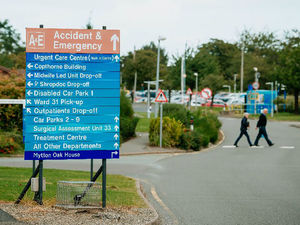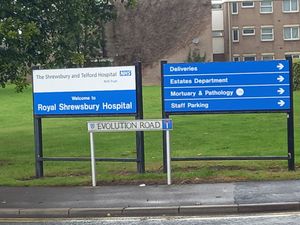Future Fit: Shropshire hospital reorganisation set for major step this month
The outline case for the reorganisation of Shropshire's main hospitals is due to be published within weeks - with the plans having to be adapted due to the coronavirus pandemic.

Mark Brandreth, the interim accountable officer at the county’s Clinical Commissioning Group said the Future Fit outline case to re-shape Royal Shrewsbury Hospital and Princess Royal Hospital is expected to go to the hospital trust board for approval later this month.
Mr Brandreth said projected costs had increased from the £312 million originally approved by the government due to inflation and design changes – with Covid requiring new beds to be in single rooms rather than wards.
He told Telford and Wrekin’s Health and Wellbeing Board that, despite the rise in cost, the plans were still within the parameters of the consultation held in 2018.
The controversial hospital reorganisation would see emergency medicine moving to the Royal Shrewsbury Hospital, with Telford’s Princess Royal Hospital focussing on planned care.
Two Telford and Wrekin cabinet members repeated their criticism of the project, with one calling the additional closure and repurposing of the Princess Royal Hospital’s Women and Children Unit “dangerous”.
Mr Brandreth, who took up the position at the Shropshire, Telford and Wrekin CCG in the summer, said: “Just before the pandemic, the Shrewsbury and Telford Hospital NHS Trust, who were the lead on this, were beginning to work on the strategic outline case [SOC].
“It’s a fairly short document that sets out the way the scheme would be delivered and, in effect, is the beginning of the call-down for money from NHS England.
“The pandemic got in the way and as we realigned everyone to the front line, work like this was paused, and rightly so.
“Over the summer, colleagues have picked this up and we are working towards consideration of that SOC by the SaTH board towards the end of the year and the start of the national process in December.
“What they are working through is the consequence of two significant things.
“One is inflation. The second is that the national guidance around single rooms, as a consequence of the pandemic, has also changed. There is an expectation in any new building scheme that the vast majority of wards will be single rooms, rather than four- or six-bedded bay wards. That also adds a cost because of the design consequences.
“We’re going to be living with Covid, and other things we probably don’t even know about, so infection control is going to be really significant.
“We’re having conversations with NHS England about the consequences of that, but it’s safe to say we are intending to try to get that through the national process towards Christmas.
“We will be able to share the SOC when it goes into the public domain later in the autumn, so soon.
“It has to be submitted in December, so SaTH will consider it at the end of October.”
He said the “outline business case” would follow after the SOC.
Board chairman Kelly Middleton asked: “If it’s vastly different from the original, will it carry on? Will it be brought back?”
Mr Brandreth said: “At the moment it will cost more, as a consequence, so that needs to be worked through, we’re working through that at the moment, but it honours the original consultation.”
Councillor Paul Watling, Telford and Wrekin’s portfolio holder for communities, engagement and partnerships, said: “Clinically, we know the need for the Women and Children Unit to be based at Telford is even more apparent than it was when it was built.
“By moving forward with Future Fit in the way that you are, you are actually increasing health inequalities because the most disadvantaged young people and women are going to have to do even more to get the healthcare they desperately need.
“We think it’s dangerous for our community.”
Councillor Andy Burford, the cabinet member for health and social care, said the “escalating costs” were another important issue.
“It’s clear that the £312 million that was allocated doesn’t even get us to square one; we are depending on NHS England coming up with a lot of money” he said, adding that the money could be better spent on improving services across the board.
Councillor Burford added: “With the borrowing costs on sums like that, I’m not sure if it stacks up as a viable project even on its own terms.”
The Department of Health and Social Care approved £312 million of funding in 2018, based on estimates in a draft business case compiled two years earlier, but revisions the following year saw that rise to £533 million.




